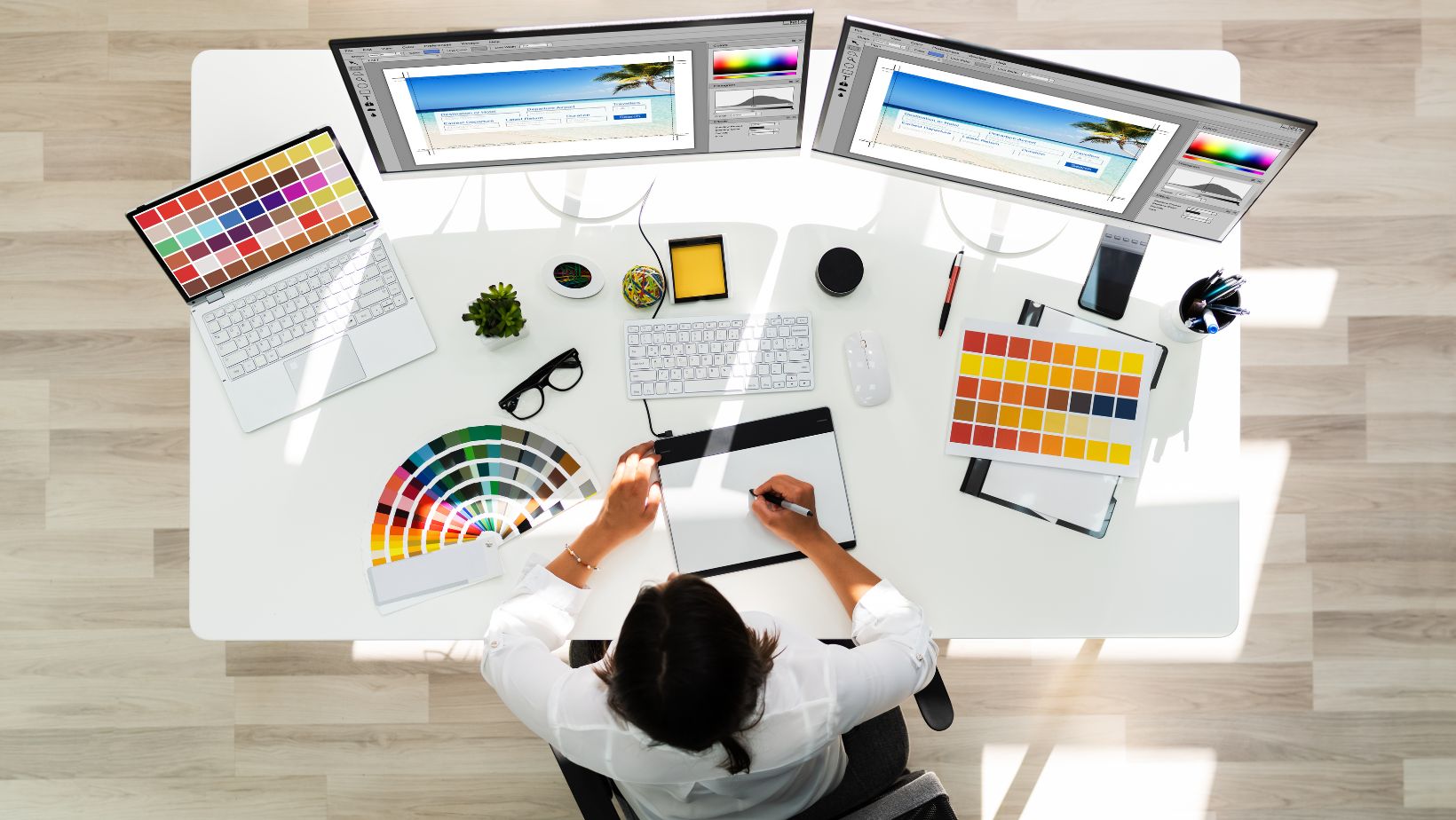Are you looking to learn how to zoom in on Adobe Illustrator? Well, I’ve got you covered! Zooming in is an essential skill that allows you to focus on the intricate details of your artwork. In this article, I’ll walk you through the various methods to zoom in on Adobe Illustrator, so you can work with precision and clarity.
One of the simplest ways to zoom in on Adobe Illustrator is by using the keyboard shortcuts. By pressing “Ctrl” and “+” (or “Cmd” and “+” for Mac users), you can quickly zoom in on your canvas. Conversely, if you need to zoom out, just press “Ctrl” and “-” (or “Cmd” and “-“). These shortcuts are handy when you want to adjust your view without wasting time navigating through menus.
Another method is utilizing the Zoom tool located in the Tools panel. Simply click on the magnifying glass icon or press “Z” on your keyboard to activate it. With this tool selected, click once anywhere on your canvas to zoom in or use Alt/Option + click to zoom out. This method provides more control as it allows you to specify exactly where you want to focus within your illustration.
Now that you know a couple of ways to zoom in Adobe Illustrator, let’s dive deeper into each technique so that even as a beginner, mastering these skills will be a breeze!
Table of Contents
ToggleHow to Zoom In on Adobe Illustrator
Understanding how to zoom in on Adobe Illustrator is essential for precise editing and design work. The Zoom Tool allows you to focus on specific details of your artwork by either magnifying or reducing the view. Here’s a step-by-step guide to help you navigate through the zooming process:
- Select the Zoom Tool: To begin, locate the Zoom Tool in the Tools panel (shortcut: Z). It’s represented by a magnifying glass icon.
- Zoom In: To zoom in, click on the area of your artwork that you want to magnify. Each click will increase the zoom level incrementally.
- Zoom Out: Similarly, if you want to reduce your view, hold down the Alt (Windows) or Option (Mac) key and click with the Zoom Tool. Each click will decrease the zoom level gradually.
- Using Marquee Zoom: Another way to zoom in is by using Marquee Zoom. Select the tool and drag a rectangle around an area of interest within your artwork. Illustrator will automatically adjust the zoom level accordingly.
- Fit Artboard in Window: If you want to quickly fit your entire artboard within your window, double-click on either the Hand tool or press Ctrl + 0 (Windows) / Command + 0 (Mac).
Now that you have mastered basic zooming techniques let’s explore some additional ways to adjust and optimize your viewing experience.

Adjusting the Zoom Level: Finding The Perfect View
Sometimes, finding that sweet spot between too much detail and an overall understanding of your design can be challenging while working on Adobe Illustrator projects. Luckily, there are several options available for adjusting and fine-tuning your preferred zoom level:
- Zoom Slider: Located at the bottom-left corner of Illustrator’s interface, this slider allows you to manually adjust the zoom level by dragging it left or right. Slide to the right to zoom in and slide to the left to zoom out.
- Zoom Percentage: On the bottom-left corner of Illustrator’s interface, you’ll find a text box displaying the current zoom percentage. You can click on it and enter a specific value to set your desired zoom level.
- Navigator Panel: Accessible through Window > Navigator, this panel provides a bird’s-eye view of your artwork and allows you to quickly navigate within larger projects. Simply click and drag the red rectangle within the Navigator panel to move around your artwork.
- Zoom Tool Options: By double-clicking the Zoom Tool in the Tools panel, you’ll open up its options dialog box. Here, you can specify whether you want smooth or precise zooming for more control over your adjustments.
By memorizing these keyboard shortcuts for zooming in Adobe Illustrator, you’ll be able to quickly focus on details and work with precision without having to reach for menus or use other time-consuming methods.
Remember that practice makes perfect! The more you incorporate these shortcuts into your workflow, the easier it will become and the more time you’ll save during your design process.






